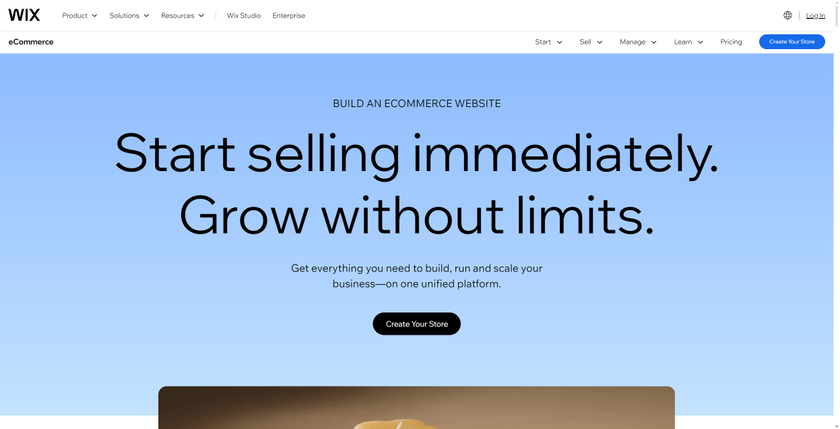Six steps to making your business website accessible
A crucial factor of website performance is accessibility

Digital transformation continues to move our daily lives to the internet, forcing businesses of all sizes to adopt new technologies that better meet their customers’ needs and help them to compete in the digital age.
But as digital transformation sweeps through every industry - from retail to transportation to manufacturing, and beyond - it’s exposing gaps in digital accessibility and the vulnerabilities these gaps create for businesses and customers alike.
- Here’s our list of the best on-page SEO tools right now
- We’ve built a list of the best SEO research keyword tool
- Check out our list of the best rank checking tool available
According to the Centers for Disease Control and Prevention, one in four Americans lives with some type of disability.
Yet, only 3% of the internet is accessible to people with disabilities. So, when we talk about gaps in digital accessibility, we are first and foremost talking about millions of lives and livelihoods that are being left behind, while the rest of the society continues to reap the benefits of digital transformation.
Despite the legal guidelines governing digital accessibility, the moral imperative, and a good business sense, many companies still don’t feel the urgency - or don’t know how - to make their digital content universally accessible.
The good news is that today we have the technology and human expertise needed to bridge the digital accessibility gap without inflicting operational or financial burden on businesses. Below are six steps every business should take to ensure equal access to their digital content and tools, and by extension - to their products and services.
But before diving into the action steps, let’s first review a few basic definitions.
Are you a pro? Subscribe to our newsletter
Sign up to the TechRadar Pro newsletter to get all the top news, opinion, features and guidance your business needs to succeed!
What is digital accessibility?
Digital accessibility is the practice of designing and building websites, apps, media, and web-related tools and technologies that are usable by people who are living with disabilities or conditions that may impact their access to the web.
There are a number of visible and invisible disabilities that may impair a person’s ability to access digital content. The general categories of disabilities include visual, auditory, motor, and cognitive/neurological.
To be accessible to the broadest audience, digital content should meet the four major principles defined by the World Wide Web Consortium (W3C) - it has to be perceivable, operable, understandable, and robust.
In summary, users need to be able to see and hear content, use different functionalities, navigate website structure and content with ease and clarity, and be able to use different assisted technologies.
Why is digital accessibility important?
More than a billion people need assistive technology to carry out their daily tasks. In the digital context, assistive technology is any device, software, or equipment that’s easy to use and helps people with disabilities to consume and interact with web content. Voice-enabled software, keyboard alternatives, and screen readers (JAWS, NVDA) are all examples of assistive technology.
But assistive technology by itself can’t make your website content accessible. You have to incorporate digital accessibility best practices into the design and development of your website, so that people who use assistive technology can engage with your content, make online purchases, and become repeat customers.
As you think about the ROI of digital accessibility, consider that, in the US alone, people with disabilities control $645 billion in disposable income.
Another important consideration is search engine optimization (SEO). From a business perspective, the purpose of SEO is to drive target audiences to your website and convert site visitors into paying customers. For Google, the world’s biggest search engine, the goal is “to organize the world's information and make it universally accessible and useful.” By implementing digital accessibility best practices, such as clear navigation, proper headings, ALT text, video captions, etc., you can improve your site’s ranking in search and grow organic traffic.
Just keep in mind that while digital accessibility helps boost SEO, your site’s great search ranking doesn’t mean your content is fully accessible to people with disabilities or meets the legal standards. Which brings us to the next point: legal guidelines governing digital accessibility.
Key laws and guidelines for digital accessibility
The Americans with Disabilities Act (ADA) is one of the key legislations that prohibits discrimination based on disability. For a website to be compliant with the ADA, it must be accessible to people who browse the web with assistive devices. Between 2017 and 2021, the number of ADA-related lawsuits went up 400%. If your website is not accessible to people with disabilities, it's not compliant with the law and you are at risk of being sued.
Based on the way the courts and the Department of Justice have interpreted the law so far, ADA compliance is clearly mandatory for government and business websites. Most ADA website lawsuits are filed against businesses that are considered “places of public accommodation” under the law.
But the ADA, which was signed into law in 1990, doesn’t provide technical standards or specific legal criteria for implementing digital accessibility. Instead, there are W3C guidelines known as Web Content Accessibility Guidelines (WCAG) that serve as the basis of modern discussions on the accessibility methods and provide clear guardrails for how to format content so it is accessible to all users.
Even though WCAG are considered a “voluntary technical standard” under the ADA, they are frequently cited in lawsuits and ADA settlements. In fact, ADA precedence shows that using WCAG as a guideline will ensure your site is usable and compliant. Adhering to WCAG guidelines will also help to protect your business from the threat of expensive litigation.
Six steps to make your website accessible
Broadly speaking, steps in creating accessible websites fall into two categories: designing new sites and revamping existing sites for greater accessibility.
1. Incorporate digital accessibility into website design
According to a 2021 study by AudioEye, 50% of designers and developers say they are fairly familiar with digital accessibility.
Website accessibility starts at the very beginning of a design project and designers should address it at every step of the way. Some elements to consider from the start are colors, color contrasts, ALT text on images, programming text for screen readers, font styles, and the careful use of interactive elements.
While designing for accessibility should be a top priority from the beginning, WCAG guidelines are ever-evolving, so it’s not a one-and-done effort. Accessibility improvements should be addressed on an ongoing basis.
2. Review existing websites regularly
Review all new or updated content to make sure your site continues to meet the accessibility standards. As WCAG guidelines evolve and new developments in accessibility aids are uncovered, it is up to webmasters and designers to keep a site up-to-date. Because these changes are happening constantly, webmasters should implement regular accessibility monitoring.
Artificial Intelligence (AI) accessibility tools can uncover broken or missing accessibility features and automatically make the fixes in real-time or alert webmasters to manually remediate issues. There are tools, such as AudioEye, that specialize in active monitoring to flag new accessibility issues.
3. Acknowledge the current limits of AI technology
While accessibility AI is a cost-effective solution to automate accessibility in real-time for a majority of issues and continues to become more advanced, there are gaps in its capabilities that require more dedicated human attention to overcome.
The ideal solution to maintaining digital accessibility is to pair AI solutions with experts who manually check and remediate issues. Automation will continue to improve with new developments in catching and fixing errors, but in the meantime, manual monitoring and remediation are vital to a truly accessible website.
4. Use manual support to ensure digital accessibility
Designate a person to perform regular manual tests of all elements on the website. When errors and issues are found, implement manual fixes as soon as possible. Document all fixes and test to ensure the fixed remediations stick.
5. Continuously train and empower your team
Accessibility experts are available to train your internal team on best practices. While everyone has access to WCAG, interpreting them can be difficult for webmasters, designers, and developers who are not well-versed in digital accessibility.
One-off or regular training sessions can be arranged for a deep dive into particular elements of accessibility. This could be particularly helpful when redesigning or developing a new site.
6. Stay current on digital accessibility laws and regulations
Accessibility experts are well-versed in the legal proceedings surrounding website accessibility issues. Oftentimes, businesses are shocked when presented with a web accessibility lawsuit. Calling on the support of experts in these situations can be tremendously helpful in navigating through the process and quickly repairing existing issues to prevent further legal action.
Digital accessibility can seem as a complex, highly-technical field with moving pieces. Don’t get discouraged, instead tap into available resources, start implementing the steps above, and make digital accessibility part of your business culture.
With a combination of AI technology, human developers and designers, and regular monitoring and improvements, you can make your site accessible and inclusive, increase your market reach, and protect your business from potential legal action.
- We've also highlighted the best website builders on the market
Dominic Varacalli is the Chief Operating Officer President of AudioEye, a SaaS company offering a hybrid solution that makes digital content accessible to individuals with disabilities.
Most Popular






